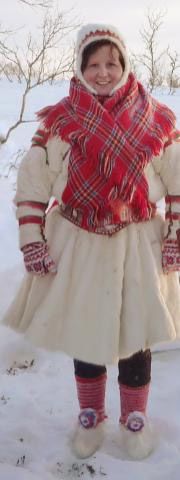 As basis for the analysis of snow concept, interviews, linguistics, and physical aspects and reindeer herders’ knowledge was used, thus combining indigenous people’s knowledge and snow physic measurements. In addition, a siida-based monitoring system based on herders’ specialist language was developed, where herders from five different siidas used herding diaries in monitoring and making daily observation of variations in snow condition, wind, precipitation, topography related to herd behavior and welfare. 318 snow related concepts used by reindeer herders in this area, contain factors that affect reindeer survival and sustainability, well-being of reindeer and the human working conditions. The concepts contain a set of characteristics belonging to reindeer herding and snow physics, and their multidimensional content show that some concepts are based on the physical characteristics of snow and can therefore be compared with international snow classification, while others have elements connected to the different herding strategies.
As basis for the analysis of snow concept, interviews, linguistics, and physical aspects and reindeer herders’ knowledge was used, thus combining indigenous people’s knowledge and snow physic measurements. In addition, a siida-based monitoring system based on herders’ specialist language was developed, where herders from five different siidas used herding diaries in monitoring and making daily observation of variations in snow condition, wind, precipitation, topography related to herd behavior and welfare. 318 snow related concepts used by reindeer herders in this area, contain factors that affect reindeer survival and sustainability, well-being of reindeer and the human working conditions. The concepts contain a set of characteristics belonging to reindeer herding and snow physics, and their multidimensional content show that some concepts are based on the physical characteristics of snow and can therefore be compared with international snow classification, while others have elements connected to the different herding strategies. Some snow concept are complex categories in the sense that a term contains and includes many factors simultaneously, such as information of snow, snow conditions, snow physics, weather, temperature, location, time and impacts of animals and humans. Snow concepts are central for daily work with the reindeer, and constitute important parts for reindeer herders’ traditional knowledge. Reindeer herders observe and manage snow from two perspectives; the snow physics and the ecology of herds in the winter grazing area, which reveals a holistic knowledge and view.
The data indicate strategic and systematical use of grazing areas in terms of time and space and, shows variability between the siidas in terms of snow conditions between years and between pasture areas. Every winter siida has its unique grazing condition, which makes it difficult to compare one siidas grazing condition with others, and draw general conclusions. The use of Sámi snow concepts mirror reindeer herders’ traditional knowledge of the management of the herd on snow covered ground and how herders deal with these complex systems. This kind of knowledge has contributed to the survival of reindeer herding since time immemorial. The analysis of snow concepts show the importance of using Sámi reindeer herders’ specialist language and traditional knowledge in mainstream the governance of reindeer herding. Thus the national adaptive strategies must recognize reindeer herders’ traditional knowledge, and their cultural and linguistic rights must be included in adaptation strategies for climate change. This requires different ways of knowing, combining both herders’ experienced-based knowledge and scientific knowledge.
